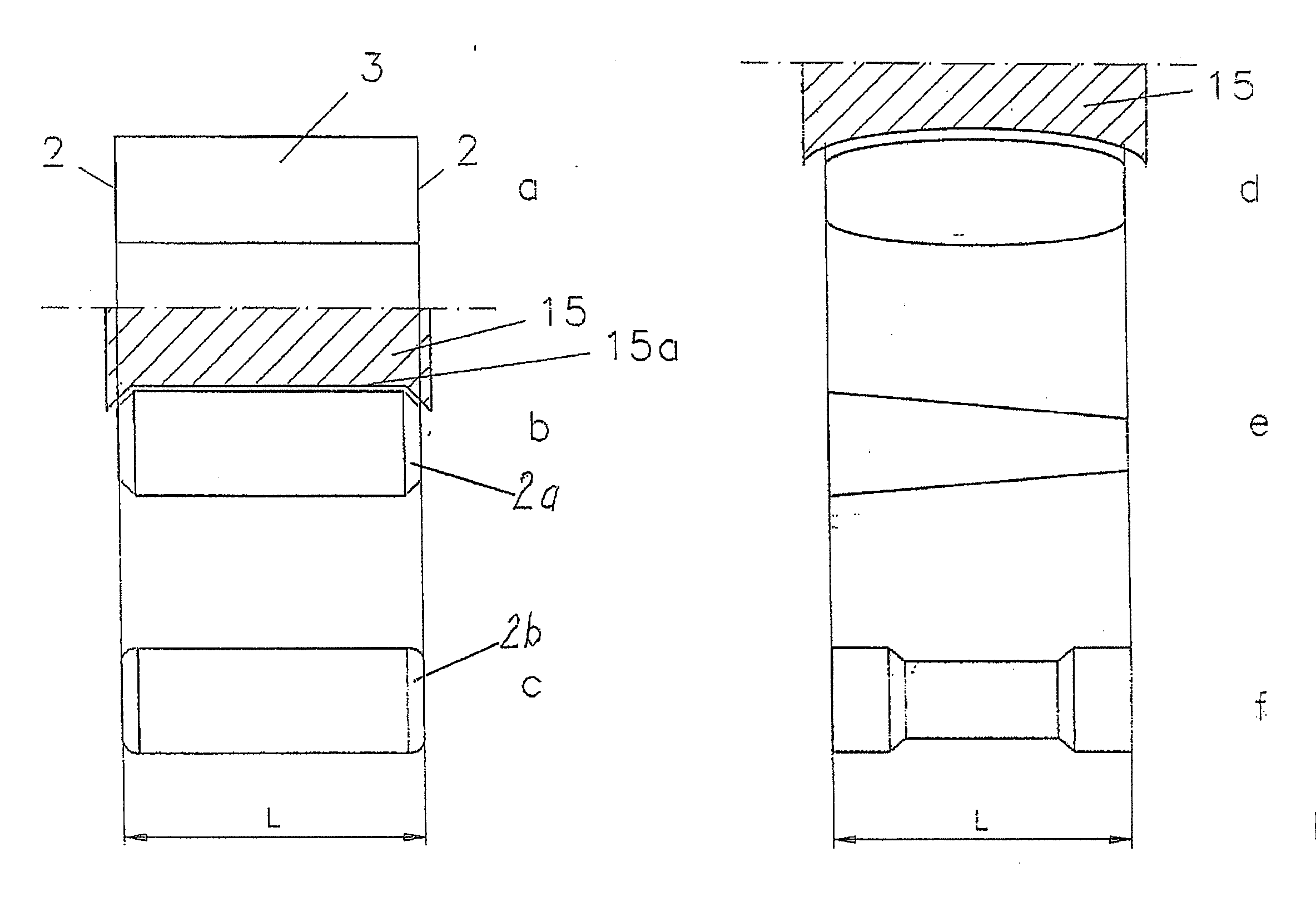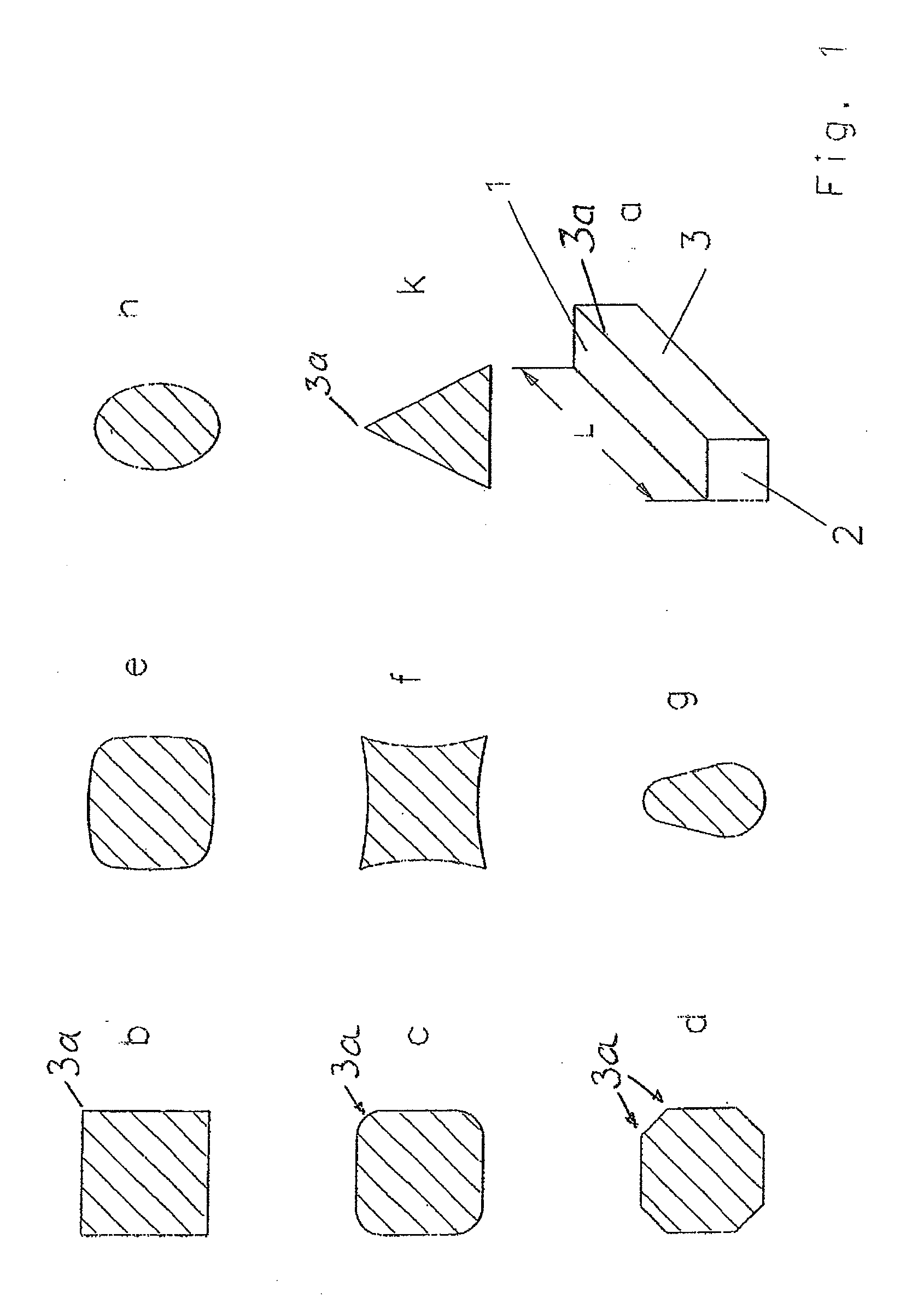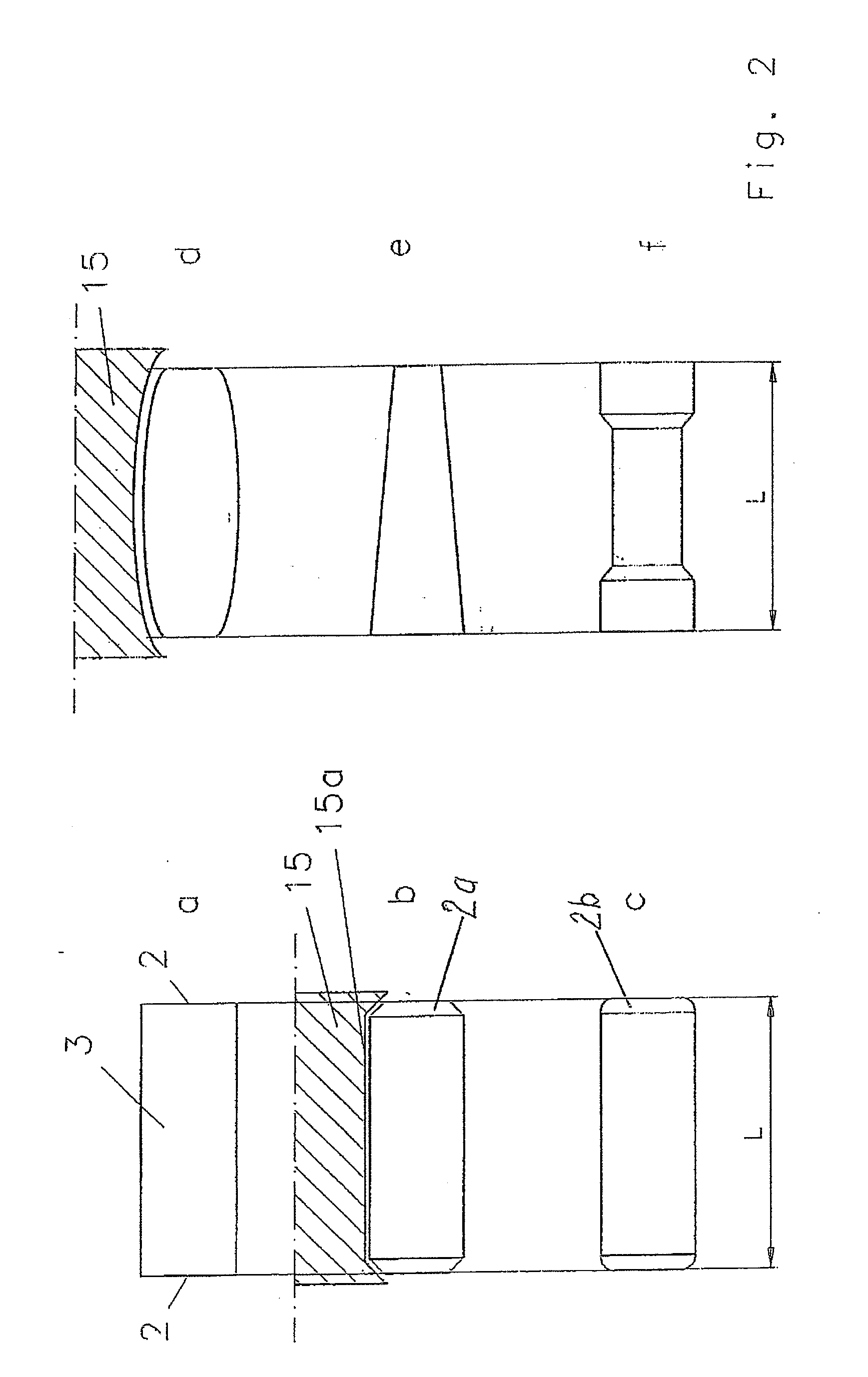Method and grinding machine for the complete grinding of short and/or rod-shaped workpieces
a technology of workpieces and grinding machines, which is applied in the direction of grinding machines, grinding machine components, grinding/polishing apparatus, etc., can solve the problems of difficult to supply the grinding zone with cooling lubricant, inability to achieve the same material removal rate, and limited method to geometric cross-sections with straight edges, etc., to achieve the effect of improving the accuracy of products, reducing the cost of production and improving the speed of machining
- Summary
- Abstract
- Description
- Claims
- Application Information
AI Technical Summary
Benefits of technology
Problems solved by technology
Method used
Image
Examples
Embodiment Construction
[0050]FIG. 1 provides examples of the shape that the cross-section of the rod-shaped workpiece 1 to be ground can have. In its simplest shape, the rod-shaped workpiece 1 is a block-shaped rod with square end faces 2 and rectangular longitudinal sides 3 that meet in lateral edges 3a (see FIGS. 1a through 1d). One preferred area of application for such rod-shaped workpieces 1 are actuators in mechanical switching or control devices. These control members can have a length L between 10 and 80 mm and a cross-section between 2 and 15 mm; however, this is only an example. Materials for such rod-shaped workpieces 1 are different metals, but also ceramic materials. Depending on the function desired, the cross-section does not have to be a strictly geometrical square (b). Thus, the longitudinal edges can be rounded (c) or provided with flat bevels (d). The square shape can also be varied to include a square with convex surfaces (e) or concave surfaces (f). Furthermore possible are contours h...
PUM
| Property | Measurement | Unit |
|---|---|---|
| edge length | aaaaa | aaaaa |
| edge length | aaaaa | aaaaa |
| edge length | aaaaa | aaaaa |
Abstract
Description
Claims
Application Information
 Login to View More
Login to View More - R&D
- Intellectual Property
- Life Sciences
- Materials
- Tech Scout
- Unparalleled Data Quality
- Higher Quality Content
- 60% Fewer Hallucinations
Browse by: Latest US Patents, China's latest patents, Technical Efficacy Thesaurus, Application Domain, Technology Topic, Popular Technical Reports.
© 2025 PatSnap. All rights reserved.Legal|Privacy policy|Modern Slavery Act Transparency Statement|Sitemap|About US| Contact US: help@patsnap.com



